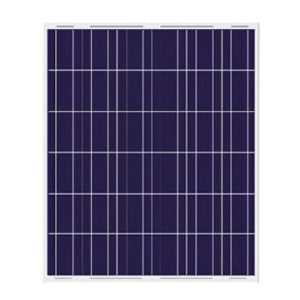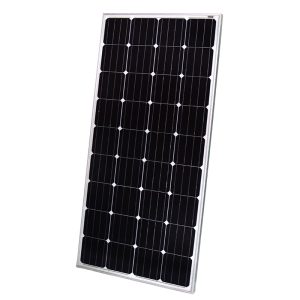In today’s world, as renewable energy gains popularity, solar panels have become a go-to choice for homeowners, businesses, and outdoor enthusiasts. 365-watt solar panels have emerged as a popular option due to their high power output and efficiency, providing reliable power solutions for various applications. This guide will delve deep into the pricing of 365-watt solar panels, covering factors that influence their cost, tips for saving money, and considerations for selection and installation.
Factors Influencing 365-Watt Solar Panel Prices
Understanding the factors that affect the price of 365-watt solar panels is crucial for making an informed purchasing decision. Let’s explore these factors in detail:
1. Solar Panel Technology
The type of solar panel technology significantly impacts the price. There are three main types of solar panels: monocrystalline, polycrystalline, and thin-film.
Monocrystalline Panels: These are the most efficient and expensive option. They’re made from a single crystal structure, which allows for better electron flow and higher efficiency. 365-watt panels are likely to be monocrystalline due to their high power output.
Polycrystalline Panels: These panels are slightly less efficient but more affordable. They’re made from multiple crystal structures, which results in a slightly lower efficiency but a more cost-effective option.
Thin-Film Panels: While the cheapest option, thin-film panels are rarely used for residential installations due to their lower efficiency and larger space requirements.
For a 365-watt panel, you’re most likely looking at either monocrystalline or high-efficiency polycrystalline options. The price difference between these can be significant, with monocrystalline panels often costing 10-15% more than their polycrystalline counterparts.
2. Brand and Manufacturer
The brand and manufacturer of the solar panel play a crucial role in determining its price. Established brands with a reputation for quality and reliability, such as LG, Panasonic, and SunPower, often command premium prices. These brands typically offer higher efficiency ratings, better warranties, and more robust performance guarantees.
For example, a 365-watt panel from a premium brand like SunPower might cost 20-30% more than a similar wattage panel from a lesser-known manufacturer. However, the higher initial cost may be offset by better long-term performance and more comprehensive warranty coverage.
3. Efficiency
Solar panel efficiency refers to the amount of sunlight that can be converted into usable electricity. Higher efficiency panels can produce more power in the same amount of space, making them particularly valuable for installations with limited roof area.
365-watt panels typically have efficiency ratings between 19% and 22%. Panels at the higher end of this range will generally cost more. For instance, a 365-watt panel with 22% efficiency might cost 15-20% more than one with 19% efficiency. However, the higher efficiency panel will produce more energy over its lifetime, potentially offsetting the higher initial cost.
4. Durability and Warranty
Durability and warranty terms significantly influence the price of solar panels. Panels designed to withstand harsh weather conditions, such as high winds or heavy snow loads, often come with a higher price tag. Similarly, panels with longer and more comprehensive warranties typically cost more upfront.
Most quality 365-watt panels come with a 25-year power production warranty, guaranteeing that the panel will produce at least 90% of its rated power after 25 years. Some premium manufacturers offer even better terms, such as a 92% power output guarantee after 25 years. These superior warranties can add 5-10% to the panel’s cost but provide greater peace of mind and potentially better long-term value.
5. Installation Costs
While not directly related to the panel itself, installation costs significantly impact the overall price of a solar system. Installation costs can vary widely based on factors such as roof complexity, system size, and local labor rates.
For a typical residential installation using 365-watt panels, installation costs might range from $0.70 to $1.50 per watt. This means for a 6 kW system (about 16-17 365-watt panels), installation could add $4,200 to $9,000 to the total system cost.
Tips for Saving on 365-Watt Solar Panel Costs
While 365-watt solar panels represent a significant investment in renewable energy, there are several strategies you can employ to reduce the overall cost:
1. Government Incentives and Tax Credits
Taking advantage of government incentives and tax credits can significantly reduce the cost of your solar installation. In the United States, the federal solar investment tax credit (ITC) allows you to deduct 30% of the cost of installing a solar energy system from your federal taxes. This incentive alone can save thousands of dollars on your solar investment.
For example, if your 365-watt panel system costs $20,000, the federal tax credit would reduce your tax liability by $6,000, bringing the effective cost down to $14,000. Many states and local governments offer additional incentives, such as rebates, performance-based incentives, or property tax exemptions. Researching and leveraging these incentives can substantially lower your out-of-pocket costs.
2. Compare Quotes
Obtaining and comparing quotes from multiple solar installers is crucial. Prices can vary significantly between providers, so getting at least three quotes can ensure you’re getting the best value. When comparing quotes, consider not just the price, but also the quality of the panels, the installer’s reputation, and the warranty terms offered.
For instance, one installer might offer a system using 365-watt panels for $2.80 per watt, while another might quote $3.00 per watt but include higher efficiency panels or a more comprehensive warranty. Carefully evaluating these differences can help you make the most cost-effective choice in the long run.
3. Consider DIY Installation
For those with technical skills, DIY installation can significantly reduce costs. However, it’s crucial to approach this option with caution. While DIY can save on labor costs, which typically account for about 10% of the total system cost, it requires extensive knowledge of electrical systems and local building codes.
If you’re considering DIY, factor in the cost of necessary tools and safety equipment. Also, be aware that improper installation can void warranties and potentially create safety hazards. Always consult with a licensed electrician for the final connections to ensure safety and code compliance.
4. Purchase Solar Panel Kits
Solar panel kits, which include all necessary components including panels, inverters, mounting hardware, and wiring, can be more cost-effective than purchasing components separately. These kits are often designed for easier installation and can be a good option for DIY enthusiasts or those working with smaller installers.
A kit containing 365-watt panels might cost 5-10% less than purchasing the components individually. However, ensure that the kit meets your specific needs and includes quality components before making a purchase.
Considerations for Selection and Installation
When selecting and installing 365-watt solar panels, consider the following factors:
1. Energy Needs
Before purchasing solar panels, it’s crucial to assess your home’s energy needs. Analyze your monthly electricity bills to determine your average energy consumption. This will help you determine how many 365-watt panels you need to meet your energy requirements.
For example, if your home uses an average of 900 kWh per month, and a 365-watt panel in your area produces about 45 kWh per month, you would need approximately 20 panels to cover your entire electricity usage. However, factors like shading, panel orientation, and local climate can affect actual production, so it’s often wise to consult with a solar professional for an accurate assessment.
2. Roof Space and Orientation
Your roof space and orientation will determine how many solar panels you can install. Ideally, your roof should face south to maximize sunlight exposure. Assess your roof space to determine how many 365-watt panels you can accommodate.
A typical 365-watt panel measures about 5.5 feet by 3.25 feet, or roughly 18 square feet. You’ll need to ensure you have enough unshaded roof space to accommodate the number of panels required to meet your energy needs. Also, consider factors like roof pitch and structural integrity, as these can affect installation costs and feasibility.
3. Sunlight Exposure
The amount of sunlight your area receives will impact the performance of your solar panels. If you live in a region with abundant sunshine, your panels will generate more electricity. Research the average sun hours in your area to estimate the potential output of your solar panels.
For instance, a 365-watt panel in Arizona, which receives about 6 hours of peak sunlight daily, might produce around 2,190 watt-hours (or 2.19 kWh) per day. The same panel in Seattle, with about 3.5 hours of peak sunlight, might only produce about 1,277 watt-hours (1.28 kWh) per day. This difference in production can significantly impact the number of panels you need and the overall system cost.
4. Installation and Maintenance
Installing 365-watt solar panels is best done by qualified and experienced professionals. Choose a reputable installer and obtain multiple quotes to compare prices and services. Regular maintenance is crucial for ensuring optimal performance and longevity of your solar panels.
Professional installation typically costs between $0.70 and $1.50 per watt. For a system using 365-watt panels, this translates to about $255 to $547 per panel for installation alone. While this may seem high, professional installation ensures proper setup, adherence to local codes, and often includes warranties on the installation work.
Conclusion
Investing in 365-watt solar panels is a smart move towards sustainable living, offering long-term economic and environmental benefits. By understanding the factors that influence pricing, tips for cost savings, and considerations for selection and installation, you can make an informed decision and fully enjoy the benefits of solar energy. With thorough research and planning, you can maximize the return on your solar investment and enjoy the benefits of clean, renewable energy for years to come.
Remember, while this guide provides a comprehensive overview, solar technology and market conditions are constantly evolving. For the most up-to-date pricing on 365-watt solar panels, it’s advisable to consult with solar panel suppliers and installers to get quotes tailored to your specific needs and location.



